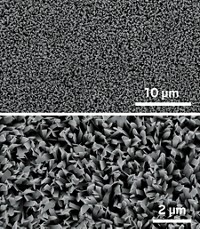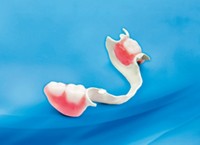Advertisement
Grab your lab coat. Let's get started
Welcome!
Welcome!
Create an account below to get 6 C&EN articles per month, receive newsletters and more - all free.
It seems this is your first time logging in online. Please enter the following information to continue.
As an ACS member you automatically get access to this site. All we need is few more details to create your reading experience.
Not you? Sign in with a different account.
Not you? Sign in with a different account.
ERROR 1
ERROR 1
ERROR 2
ERROR 2
ERROR 2
ERROR 2
ERROR 2
Password and Confirm password must match.
If you have an ACS member number, please enter it here so we can link this account to your membership. (optional)
ERROR 2
ACS values your privacy. By submitting your information, you are gaining access to C&EN and subscribing to our weekly newsletter. We use the information you provide to make your reading experience better, and we will never sell your data to third party members.
Materials
Nanotube Yarns With Muscle
Artificial muscles made from nanotubes could find use in robotics and sensing applications
by Bethany Halford
November 19, 2012
| A version of this story appeared in
Volume 90, Issue 47
Materials scientists are known to spin a yarn or two—such as the one about the thread that could lift 100,000 times its own weight. But in this case the yarn is true, and it’s literally a yarn. Researchers led by Ray H. Baughman of the University of Texas, Dallas, have created multiwalled-carbon-nanotube-based yarns that act like muscles, capable of lifting heavy loads (Science, DOI: 10.1126/science.1226762). The key to the lifting action is that the researchers replaced liquid electrolytes that typically surround such yarns with a solid filler material, such as wax. By using electricity to melt the wax, the yarn twists and generates motion that can lift an object. Other fillers make the yarn twist via chemical absorption or illumination. By attaching the yarn to a paddle, the team also created a rotor that spins at an average of 11,500 rpm for more than 2 million reversible cycles. They even used the yarns to create an electrically activated catapult. “These yarn muscles could be used for such diverse applications as robots, catheters for minimally invasive surgery, micromotors, mixers for microfluidic circuits, tunable optical systems, microvalves, positioners, and even toys,” Baughman says.





Join the conversation
Contact the reporter
Submit a Letter to the Editor for publication
Engage with us on Twitter